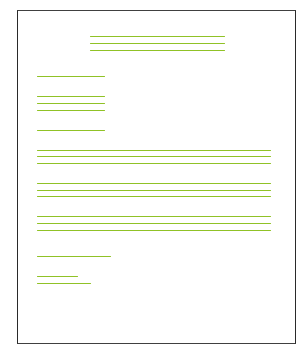PURCOM-(MODULE 6)Communicative Competencies, Skills and Strategies for Business Purposes(MODULE 6)
1/26
There's no tags or description
Looks like no tags are added yet.
Name | Mastery | Learn | Test | Matching | Spaced |
|---|
No study sessions yet.
27 Terms
Business Communication
is concerned with the study of communications between individuals and groups occurring in the
process of the administration and management of an organization.
Sender
Elements of Communication:
The person or group who starts the communication by creating and sending a message.
Receiver
Elements of Communication:
The person or group who receives and interprets the message sent by the sender.
Message
Elements of Communication:
The information or idea that the sender wants to convey to the receiver.
Channel
Elements of Communication:
The medium through which the message is transmitted, such as spoken words, written text, or non-verbal cues like gestures.
Noise / Barriers
Elements of Communication:
Anything that interferes with the accurate transmission or reception of the message, such as distractions, technical issues, or language barriers.
Feedback
Elements of Communication:
The response or reaction from the receiver back to the sender, indicating whether the message was understood as intended.
Situation
Elements of Communication:
The context or circumstances surrounding the communication, including the environment, culture, and relationship between sender and receiver.
Clear
Basic “C’s” of Business Communication:
Make sure your message is easy to understand, avoiding jargon or complicated language.
Correct
Basic “C’s” of Business Communication:
Ensure that the information you provide is accurate and free from errors.
Concise
Basic “C’s” of Business Communication:
Keep your message brief and to the point, avoiding unnecessary details or wordiness.
Complete
Basic “C’s” of Business Communication:
Provide all necessary information for the receiver to understand the message fully.
Considerate
Basic “C’s” of Business Communication:
Be mindful of the receiver's feelings, perspectives, and needs when crafting and delivering your message.
Courteous
Basic “C’s” of Business Communication:
Maintain a polite and respectful tone in your communication, showing kindness and professionalism towards the receiver.
Subject
Areas to Consider in Writing:
What the writing is about; it's the main topic or theme.
Audience
Areas to Consider in Writing:
The group of people who will read or receive the writing; understanding their characteristics and interests helps tailor the message appropriately.
Purpose
Areas to Consider in Writing:
The reason behind writing; it could be to inform, persuade, entertain, or express thoughts and emotions.
Style
Areas to Consider in Writing:
The manner or tone in which the writing is presented; it includes factors like formal or informal language, level of detail, and overall writing style.
Letter (Heading)
Part of Business Letter:
The section at the top of the letter that usually contains the company's name, address, contact information, and logo.
Inside Address
Part of Business Letter:
The recipient's address, placed below the letterhead, including the name, title, company, and address of the person or organization receiving the letter.
Salutation
Part of Business Letter:
The greeting or opening of the letter, addressed directly to the recipient by name if possible (e.g., "Dear Mr. Smith," or "To whom it may concern,").
Body of the letter
Part of Business Letter:
The main content of the letter, where the message is conveyed, usually organized into paragraphs.
Complimentary close
Part of Business Letter:
The closing phrase of the letter, expressing courtesy and goodwill towards the recipient (e.g., "Sincerely," "Best regards," "Yours faithfully,").
Signatures
Part of Business Letter:
The sender's signature(s), placed below the complimentary close, indicating the authenticity of the letter. This may include the sender's name typed below the signature if necessary.
Full-block
Business letter layout:

Modified block
Business letter layout:

Semi-block
Business letter layout:
